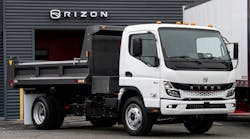Local and national clean air organizations said a Port Authority of New York & New Jersey plan to replace old port trucks has been largely ineffective and places an unmanageable burden on truckers, according to a Carroll Gardens Patch report.
On January 1, a Port Authority ban went into effect on trucks made before 1994, requiring truckers to replace their vehicles with newer, environmentally-friendly models. Truckers who drove older models were given the opportunity to take advantage of a program that provided grants and loans to those who can’t afford a new truck. But the plan calls for truckers – who are private contractors – to repay the loans, something clean-air advocates say many truckers are hesitant to do.
“That burden of buying a new truck is placed entirely on the drivers,” Brad Kerr, a board member of the Columbia Waterfront Neighborhood Association, told Patch. “They make very little money.”
“Even if a driver does think he can afford a new truck, the maintenance will in all likelihood be short changed,” said David Mendoza, a policy analyst for Puget Sound Sage.
The Coalition for Healthy Ports maintains that the only way the system will work is if trucking companies begin to hire truckers as employees rather than contractors.
“We have a bad clean truck program,” said Paul Karr, committee senior communications officer. “We’re relying on low-income, vulnerable, primarily minority and Hispanic communities to clean the air.”
Last year, the Port of Los Angeles instituted similar requirements and incentives to replace port trucks, but mandated that truckers be reclassified as employees of the trucking companies.
Bronx truck driver Kirby Reyes, 38, was forced to quit his job as a port trucker after 11 years as a result of the new regulations. Reyes’ truck was made in 1991, and though he was rejected for a loan due to poor credit, he didn’t foresee a situation in which he would have been able to pay it back, he told the Patch. “Why take a loan for $100,000? The interest is too much,” Reyes said, adding, “If I had an opportunity, I’d go back.”


